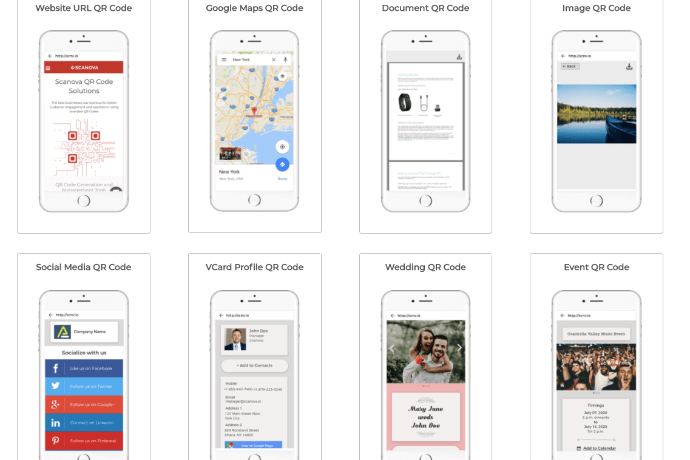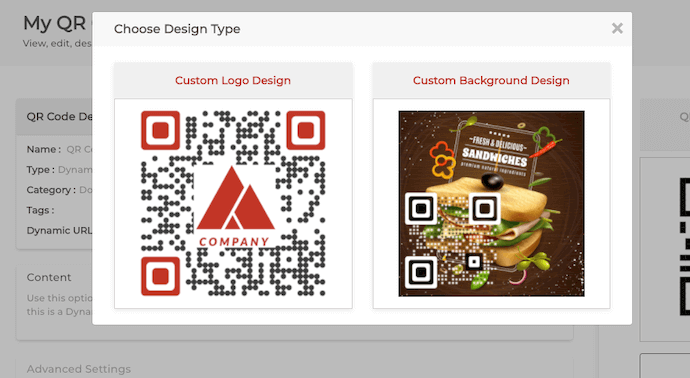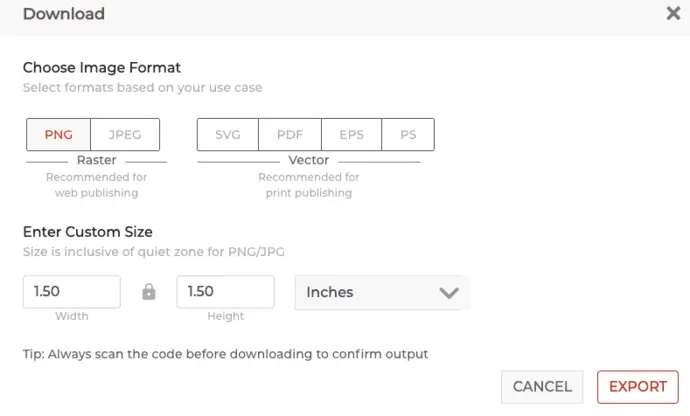You probably have seen plaques on some walls or monuments. They are inscribed tablets commonly used to remind people of a significant person or event. It could be for your loved ones, an achievement, or some historic monument.
They’re used to showcase important information related to an individual, monument, history, event, etc.
But here’s the problem—plaques have limited etching space. Hence, it becomes quite a task to add as much information as you wish to your plaques.
So, you are looking for a solution that helps you get expressive without any space constraints.
Introducing—QR Codes. For the uninitiated, they are advanced barcodes that can store a lot of information in a smaller space.
With QR Codes, you can share as much information as you want without worrying about limited space. And the best part is that people just need to scan them with a smartphone to access the stored information.
In this article, we will discuss what kind of information you can share using QR Codes on plaques.
As mentioned above, QR Codes can help you share a large amount of information via a compact size. And here are different types of information you can share via QR Codes:
1. Information about artifacts and monuments
Many museums and art galleries are using QR codes to supply details about an artifact or monument to visitors.
To do it, they use the following categories QR Codes:
- Landing Page QR Code: This QR Code, when scanned, takes the end-user to a mobile-optimized landing page having lots of information. This could include details such as images, graphics, or an explanatory video about the monument or artifact
- Text QR Code: It shows the text to the end-users. It could be anything such as the detailed history or importance of the subject
- Audio QR Code: Scanning this QR Code takes the end-users to listen to the encoded audio file(s). It could be an audio guide or podcast related to the monument or artifact
These QR Codes can then be placed on appropriate plaques for the visitors to scan.
2. Offer complete information
Apart from museums and art galleries, plaques are also used to showcase important information related to an individual, monument, history, event, etc.
But often it becomes tough to add as much information as you want to the plaque. Even if you somehow do that, plain text-based plaques can be quite dull to look at. So why not make them informative, unique, and attractive?
So, you need a better solution. This is where QR Codes can help you out.
As mentioned above, they can store lot of information including both text and multimedia. For example, photos, videos, audio, and documents.
Generate a QR Code For Your Unique Case
START TODAY!
This can come in especially handy if you want to deliver a personalized message to your audience or receiver. This means you’ll be able to store messages inside the QR Code and print them out on plaques.
3. Show directions in public places
People often have a hard time finding directions to historical places or monuments in a large city. And if that’s the case with you too, then you need to assist your visitors.
And to do that, QR Codes can help you out. Just create a Google Maps QR Code. This QR Code, when scanned, will pop-open you location on the visitors’ maps application. They can then easily drive to your location.
4. Promotional plaques
Do you use print media such as flyers, brochures, or banners for promotional purpose?
Then make sure your plaques are unique enough to stand apart from the crowd.
But here’s the problem—while plaques have a good attention span, they are non-actionable. That means once your audience sees your ad on plaques, they can’t take an action easily unlike digital media.
But not anymore. QR Codes are here to save the day. They make plaques actionable and trackable. That means you can easily connect your offline audience to digital content with a simple scan.
B. QR Code on Plaque—a step ahead of the conventional gifts
Plaques are not only used in monuments but also for any personal or professional use case.
For example, you can offer a plaque as a gift to your loved ones or your customers. In that case, you’d want it to be unique and engaging!
Here, you can store a song, photo collage, or a beautiful video describing the beautiful relationship between you two.
Let’s see how it works:
Create a dynamic QR Code and add it to the plaques. You can categorize them as per the encoded content such as—audio, video, image, or even text
For the uninitiated, a dynamic QR Code is editable and trackable. That means you can edit the encoded content anytime you want without the need to recreate an all-new QR Code.
As customers place an order with you, you ask them if they’d like to deliver personalized messages via QR Code
If they say yes, you ask them to share the desired content with you
After receiving the content, you update the same in the existing dynamic QR Code. Then you deliver the plaque containing this QR Code to your customer
This way, your customers can send a personalized plaque to their loved ones, friends, or family. As recipients scan it, they will see the encoded content on their phones.
This way, you can make plaque as a gift even more personalized than the traditional ways alone.
C. Best ways to use QR Codes on a plaque
Since you are planning to add QR Codes on a plaque, make sure the engraved design scans well.
So here are three things that you should know before using a QR Code on a plaque:
1. Make sure you hire an expert
Etching a QR Code on a plaque is an important task. Hence, hire a skilled person for it. Why?
Because QR Code is made up of a matrix of dots and squares that store the data. When a scanner reads a QR Code, it counts on each one of these dots. That means every individual element is important.
Hence, you need to choose a person having the expertise to carve the QR Code well.
Moreover, you also need to ask all the important questions before hiring someone. This includes questions such as whether he has ever made an engraved QR Code before or not. And what is his success rate in getting a scannable QR Code?
These questions will help you identify the person with the right expertise for your plaque.
2. Choose permanent content
If you use QR Codes, you’d want them to always remain functional and meaningful. So it should be free of all the long-term problems. What does that mean?
It means you need to choose permanent content. For example—you can use a Text QR Code on plaques to give detailed information about the historical moment. Here, they can help you tell its entire history.
And to add permanent content such as text, choose a static QR Code. It’s permanent in nature. Once you create it, you cannot edit it. And it remains functional forever.
3. Use a creative QR Code design
If you add a QR Code to a plaque, you must also think about getting creative with its design. How? You can do it by adding colors, a logo, or even a background image to it.
Getting creative by adding a design will serve two purposes. First, it will make the QR Code blend well with the plaque’s design or theme. Second, adding design will boost engagement by getting 50%-200% more scans.
Generate a QR Code For Your Unique Case
START TODAY!
4. Make sure your QR Code is highly scannable
a. Add error correction to your QR Code
Do you know QR Codes remain scannable even after wear and tear? This is due to their error correction capabilities. And it ensures high scannability after etching a QR Code on a plaque
There are four levels of error correction:
- Level L: sustains up to 7% damage
- Level M: sustains up to 15% damage
- Level H: sustains up to 25% damage
- Level V: sustains up to 30% damage
b. Ensure enough color contrast
It is crucial to ensure high color contrast between QR Code and its background. It ensures that your QR Code scans well.
So, if you have a light-colored plaque, go for darker shades of the QR Code. And similarly, if you have a dark-colored plaque, go for lighter shades of QR Code.
c. Adequate QR Code size and scanning distance
QR Code’s size and its distance with the scanner (smartphone) are important for its scannability.
And an appropriate scanning distance directly depends on the size of the QR Code.
For example, if your QR Code’s size is 2cm X 2cm, it won’t get scanned from 100 cm away.
Sounds fair, right?
But you are making guesses. And they are unreliable. So, you need a calculated approach to determine a suitable size based on the scanning distance.
To help you out, here is a general rule—the ratio of scanning distance to the QR Code’s size should be close to 10:1. That means if a QR Code is to be scanned from 100 cm away, it must be at least 10 cm wide.
D. How to make QR Code for plaques
Now that you know how QR Codes can help you make plaques expressive, you’d want to know—how to create them. Here are the steps you can follow to do the same:
1. Decide on the QR Code Category
First, decide on what you want your customers to see on scanning the QR Code. For example, if you want them to see a mobile landing page, you’ll have to create a Custom Page QR Code.
But if you want them to share a special message, you can go ahead with a Text QR Code.
Once you decide the type of QR Code to be generated, you can head to a QR Code generator. You can go through our detailed comparison chart of the top QR Code generators to find the best one for yourself.
2. Create a QR Code
Using Scanova, here’s how you can create a QR Code:
a. Go to Scanova
b. Choose the relevant QR Code category

c. Add the content you want to encode and click Continue
d. After the page loads, name the QR Code and click Create QR Code
e. You’ll see the preview of the QR Code with other details such as name, type, and category.
f. On the right, you’ll see the Edit Design button
g. Two design options will come here—Custom Logo Design and Custom Background Design

h. After finalizing the design, click Done Editing and then Download
i. A window will open for a 14-day free trial. Once you’ve signed up, proceed to download the QR Code
j. Specify the image’s format, size, and other details. Click on Export

k. QR Code will be downloaded and ready for use
That’s it. Your QR Code will be ready for use. Make sure you test-scan it before putting it out for your target audience.
That’s it. That is all you need to know about how QR Codes can be used on plaques. You can now create your own QR Code and make your plaques as expressive as possible.
Generate a QR Code For Your Unique Case
START TODAY!
